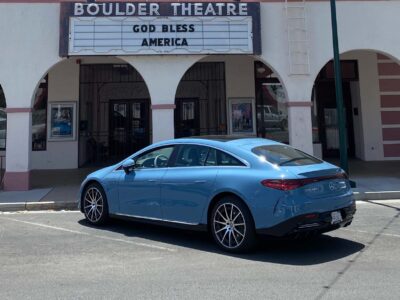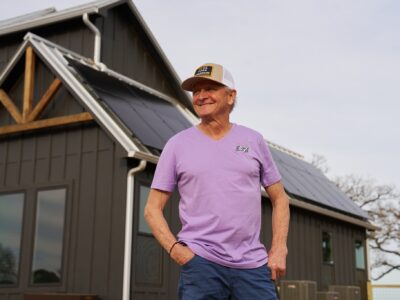(Bloomberg) —
Last month, new lighting energy efficiency rules took hold in the US, requiring new light fixtures to provide at least 45 lumens per watt of electrical input. While that does not ban incandescent bulbs per se, it has set a standard that is effectively impossible for them to meet. It also puts paid to the familiar illumination device dating back to Thomas Edison.
The new rule is not as dramatic as it might sound — 45 lumens per watt is actually well below the efficiency of light-emitting diodes. LEDs are about nine times more efficient than old incandescent bulbs. Forty-seven percent of US homes use mostly or only LED illumination already. It wasn’t the case just a decade ago, but consumers in the US are now tilting toward LEDs and away from every other light source.
Cheap, long-lasting LEDs are the latest chapter in the extraordinary decline in illumination costs since the Middle Ages. Our World in Data has a thorough analysis of the cost of lighting over the past seven centuries, finding that it’s fallen by 99.9% since 1300, while lighting efficiency has increased 1,000-fold since 1700. Those in the developed world take for granted just how abundant light is now, too. In his 2011 book At Home: A Short History of Private Life, Bill Bryson remarks that a person opening their refrigerator at night summons forth more light than an average person would have had in their entire household a few centuries ago.
Note that the trend is not just about the US or the wealthier parts of the world: LEDs are diffusing into global illumination very rapidly. In 2010, LEDs accounted for barely more than 1% of global lighting sales; last year, they were more than 50%.
Lighting is an example of the Jevons Paradox, which holds that as a good or service becomes less expensive, people consume more of it. So the cheaper the marginal lumen is, the more of them we use. This is certainly true, though it has limits — we don’t run lights all night simply because they are cheap, nor do we use three times the illumination in an already well-lit space because it costs a third of what it once did.
More importantly, thanks to the increasing efficiency of today’s LEDs and the speed with which they are reaching US homes, residential energy consumption for lighting has fallen by half in less than a decade. According to the Energy Information Administration, US households now use more electricity for refrigerators than for lighting, and about the same amount for lighting as for drying clothes. We are past a Jevons paradox here — consuming more lumens as the country’s population grows, but doing so with less and less energy.
Global energy consumption for lighting has not peaked, but it is growing slowly, by about 1% per year from 2010 to 2017, according to a recent research paper. More interesting is the fact that lighting’s share of total electricity consumption has diminished from more than a quarter to barely more than 10%. In the process, it has become a smaller portion of global electricity consumption than cooling, and even low-temperature heating too.
Continuing growth of LED lighting seems likely, and with the gains from each bulb accruing for a decade or more, it is plausible that global electricity consumption in lighting will flatten, or even decline.
But creating even a plateau in consumption is an active, not passive, process. One part of that is increasing the energy efficiency of LEDs. According to the International Energy Agency, LEDs are now more efficient than the linear fluorescent bulbs found in commercial and office spaces. For lighting to do its part to align with its Net Zero Scenario, the IEA says, efficiency will need to increase further by about another 30% by 2030.
That seems feasible, given that the current bulbs on the market today are already more efficient than what the IEA sees in aggregate. The LED selection at IKEA, for instance, includes a 450-lumen bulb that uses 3.3 watts of electricity — or more than 130 lumens per watt (those bulbs, incidentally, cost $1.99 for two). Philips launched its first 200-lumen-per-watt bulb prototype a decade ago, hitting the LED industry’s 2020 stretch goal for lighting efficiency several years early.
Another part of flattening consumption will be doing everything possible to encourage LED uptake. That includes electrification policies, which bring with them indoor air quality improvements and reduced reliance on fuels with highly variable prices. Given LED efficiencies, we want them not only replacing today’s lighting stock, but becoming all of tomorrow’s much-expanded new stock too.
A final part is, literally, more subtle. Early LEDs were (and are, given their longevity) not great for human health due to a preponderance of blue light. Blue light interferes with circadian rhythms and is also less aesthetically pleasing in many circumstances. That is where “warmer” bulbs, with a lower color temperature, can play a greater role. Today’s LEDs are capable of providing warm light mimicking candlelight, whereas older models were closer to hospital or commercial lighting. Warm light, provided at low cost and with continually improving energy efficiency, can help the world reach its net-zero lighting targets — pleasantly.
© 2023 Bloomberg L.P.





